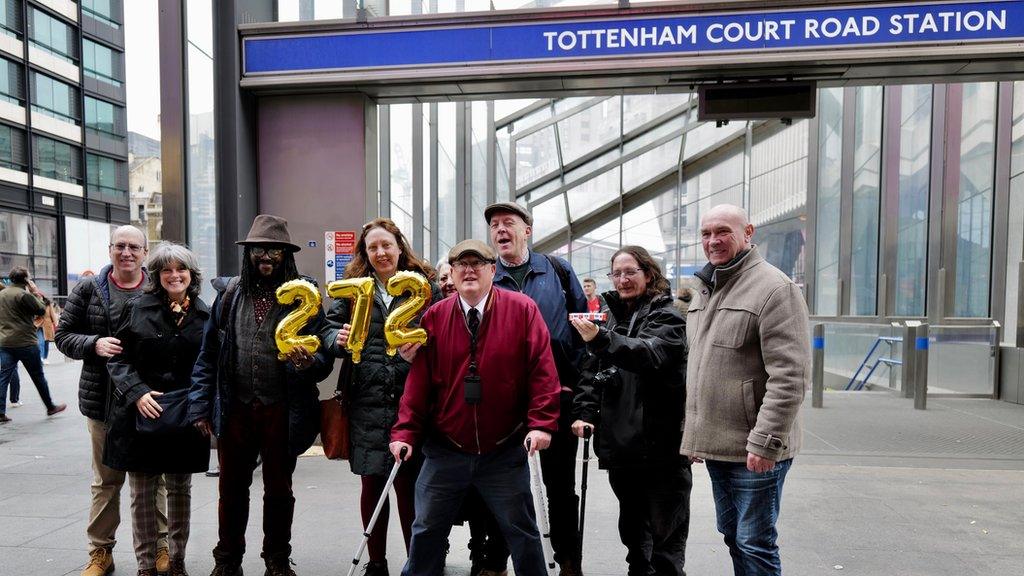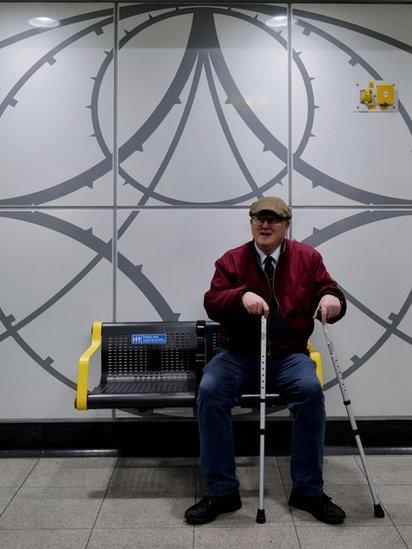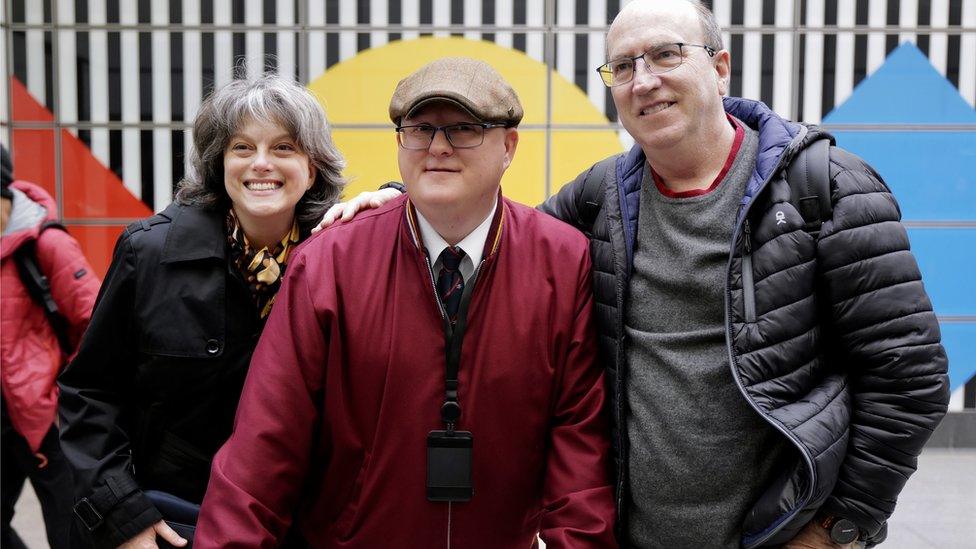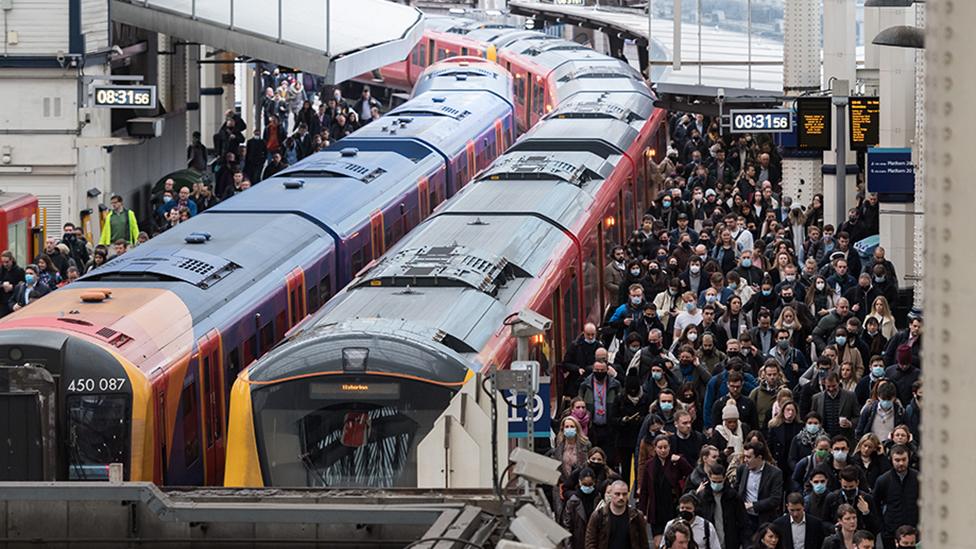The Londoner who visited every Tube station before he loses mobility
- Published

Armed with his camera and his walking sticks, Ben Spencer embarked on the challenge in September
A Londoner has spent months visiting all of London's Tube stations in a bid to make the most of his mobility and to raise awareness about his medical condition.
Ben Spencer, 49, who lives at the end of the Central Line, suffers from ataxia, a progressive and degenerative muscle disease.
The former bouncer and Millwall season ticket-holder was told in July that he probably will not be able to walk in a year's time.
Due to his love of the London Underground, he set himself the challenge of visiting all 272 Tube stations.
Mr Spencer completed his challenge on 10 February, finishing at Tottenham Court Road, and has now set himself an even bigger challenge.

Millwall-fan Mr Spencer bumped into Gary Rowett, who manages the Lions, while on his challenge
He had some difficulties with walking and speech for the best part of 10 years but lived unaware of his prognosis until July of last year.
He said: "The early symptoms started many years ago when I started to have difficulties walking," he told the BBC. "But I struggled to get a diagnosis; it was mistaken from everything to a tremor to arthritis.
"While I was glad to finally get a diagnosis, the type I have is quite an insidious kind - progressive cerebellar ataxia - and I was told this may be my last year walking. I had never even heard of it and I felt really alone."
Mr Spencer, also keen photographer, always enjoyed regularly using the Tube, often boarding at Buckhurst Hill in Essex to visit the library. Wanting to make the most of the numbered days he had to use all of the network, he decided to visit and photograph every single station and document his journeys on Instagram., external
His condition gets worse if he is more sedentary, and he says if it were not for getting out and about "I almost definitely wouldn't be walking at all".

Mr Spencer managed to visit all 272 stations in five months
Despite this, the condition has progressed faster than he had hoped, and what he thought would take him three months has taken five, with his mobility unpredictable from one day to the next. Despite these difficulties, he says he has come to love the network more than ever.
"I did like using the Tube beforehand - it's an iconic part of London - but now I would consider myself a total Tube nut. I absolutely adore it, it's absolutely fascinating learning about the history and architecture as I go. I also have made so many friends doing it and found a real community."
Asked if there was a station he liked the most, he picked the Grade II-listed Sudbury Town station on the Piccadilly line between Brent and Ealing,which he described as "a beautiful old building".

Mr Spencer celebrates his triumph at Tottenham Court Road with friends
Now that Mr Spencer struggles with noise and crowds, he sometimes seeks refuge at the quiet Roding Valley station, on the Central Line in Essex, where if you miss a train you could be waiting 15 minutes for the next one.
With support from charities Ataxia UK and Ataxia and Me, his main goal was to raise awareness about the rare and frequently misdiagnosed disease, which affects one in 50,000 people.
The symptoms of ataxia, such as poor balance, speech, vision and swallowing, are often associated with many other neurological conditions.

Along the way, Mr Spencer has become part of a Tube-loving community
Mr Spencer, who walks with two sticks, can still manage the Tube's escalators, although with some difficulty. He says he has became very aware of the accessibility issues at many stations.
He intends to "hammer home" the need to improve this for the capital's wheelchair users, and he will be documenting a second challenge - to visit to every London Tube station in a wheelchair. This, Mr Spencer says, could take up to year.
Further afield, he also has ambitions of making his way as far up Mount Snowdon as he can in a wheelchair.

His next challenge will involve a wheelchair

Follow BBC London on Facebook, external, Twitter , externaland Instagram, external. Send your story ideas to hellobbclondon@bbc.co.uk, external
Related topics
- Published16 January 2023

- Published8 February 2023

- Published30 December 2022